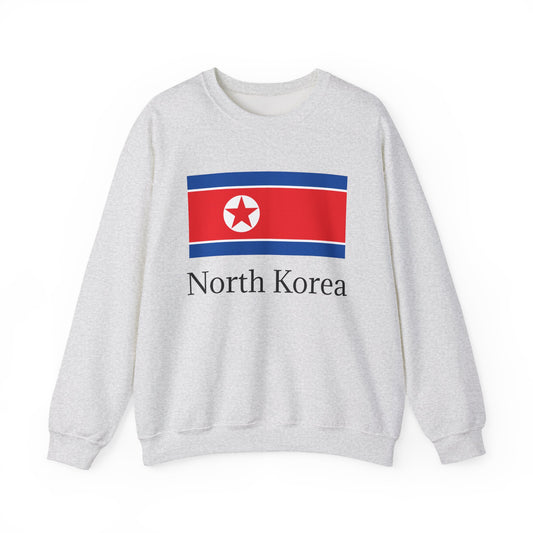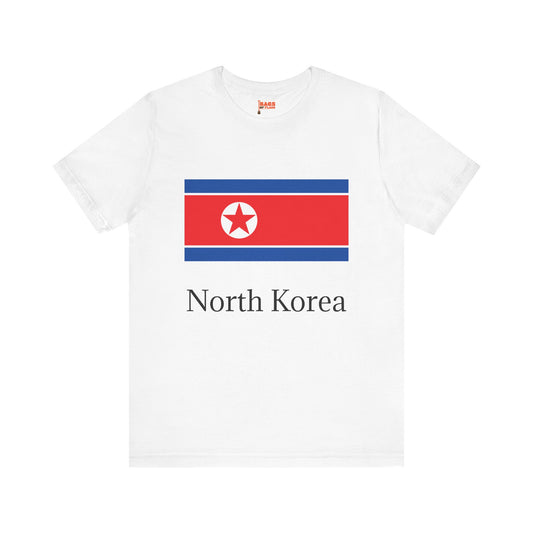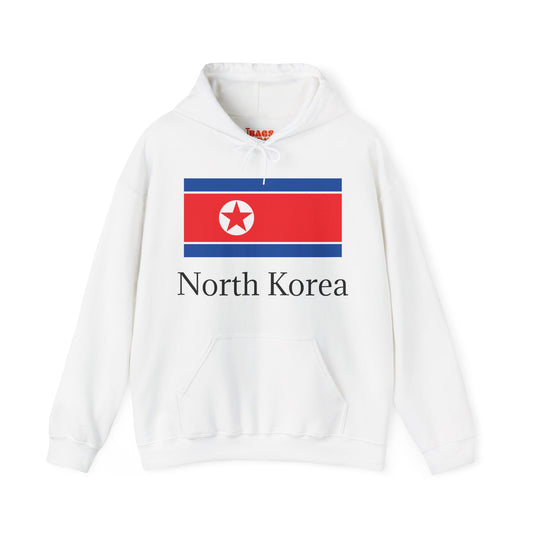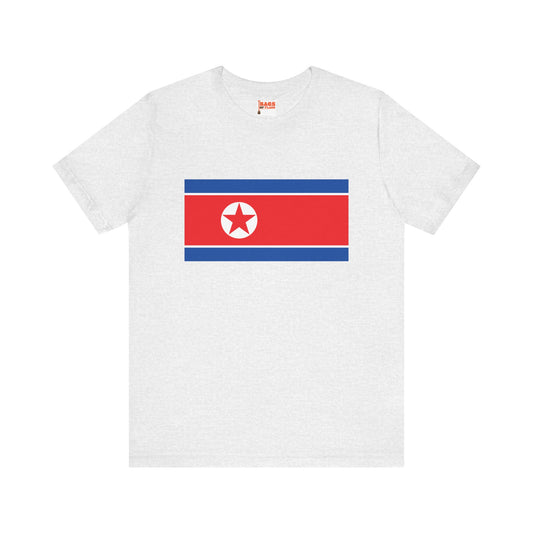-
North Korea Flag Sweatshirt
Regular price $34.15 USDRegular priceUnit price / per -
North Korea Sweatshirt
Regular price $34.15 USDRegular priceUnit price / per -
North Korea Pillow
Regular price $22.65 USDRegular priceUnit price / per -
North Korea Backpack
Regular price $59.79 USDRegular priceUnit price / per -
North Korea Leather Patch Hat
Regular price $18.85 USDRegular priceUnit price / per -
North Korea Mug
Regular price $8.65 USDRegular priceUnit price / per -
North Korea Trucker Cap
Regular price $14.90 USDRegular priceUnit price / per -
North Korea T-shirts
Regular price $22.79 USDRegular priceUnit price / per -
North Korea Flag Hoodies
Regular price $34.40 USDRegular priceUnit price / per -
North Korea Flag on Hoodie
Regular price $34.40 USDRegular priceUnit price / per -
North Korea Flag on T-shirts
Regular price $22.79 USDRegular priceUnit price / per
Collection: Korea, North
The North Korean flag, also known as the flag of North Korea, is a prominent symbol of the country's national identity. We will delve into the flag's design, history, and protocols, providing insights into its significance and use in modern-day North Korea.
Overview of the North Korean Flag

The flag of North Korea consists of a striking design, distinguished by its vivid colors and simple yet meaningful symbols. At the heart of the flag lies a broad red band, bordered on the top and bottom by narrow white stripes, beyond which lie bands of blue. The centerpiece of this design is a white disk positioned slightly off-center towards the hoist side, within which sits a five-pointed red star. The choice of red is deliberate, echoing the country's commitment to communist ideals and the sacrifices made during the struggle for independence.
The inclusion of white provides a visual contrast and carries connotations of purity and the nation's aspirations for peace. Lastly, the blue stripes serve as a reminder of the desire for sovereignty, peace, and friendship with the global community. Each element of the flag's design intertwines to convey a deep sense of national pride and the enduring values of the Democratic People's Republic of Korea.
Historical Context of the North Korean Flag
Adopted on September 8, 1948, the flag of North Korea has remained a steadfast symbol of the nation’s identity and ideals. Its introduction came at a pivotal time, marking the establishment of the Democratic People’s Republic of Korea amidst the geopolitical tensions of the Cold War era. The flag’s design was overseen by Kim Il-sung, who sought to embed the principles of the newly founded state and its ruling ideology, Juche, within its fabric. While the flag has seen minimal changes, with a notable adjustment in 1992 adjusting the diameter of the central red disk, its significance has deepened over the decades. This adjustment was a subtle refinement rather than a sweeping alteration, underscoring the enduring nature of the flag's symbolism and the continuity of North Korea's national narrative. Throughout its history, the flag has been a constant presence in the nation's life, surviving global shifts and the ebb and flow of international relations to remain a potent symbol of North Korea’s sovereignty and the unyielding spirit of its people.
Symbolism Behind the North Korean Flag

The North Korean flag is rich in symbolic meaning and carefully crafted to represent the country's ideology and aspirations. The central broad red band is a testament to the people's revolutionary spirit and their sacrifices in the pursuit of independence. This vibrant red is symbolic of the country's commitment to its communist principles and the bloodshed in its history, serving as a reminder of the struggles faced by the Korean people. Encircling the red star, the white disk is a beacon of purity, peace, and the nation’s aspirations. This element underscores the government's claim of striving for peace, both internally and in its international relations.
The red star, positioned prominently within the white disk, symbolizes the leadership and guiding principles of the Workers' Party of Korea, illustrating the party's central role in state governance and societal leadership. Flanking the red band, the blue stripes convey a message of sovereignty, peaceful coexistence, and friendship toward the international community. These colors collectively articulate North Korea's vision of itself as a resilient nation seeking to forge a peaceful path forward despite external pressures and internal challenges. Through these symbols, the flag narrates the story of North Korea's past, present, and hopes for the future, encapsulating the essence of its national identity and political ethos.
Current Relevance of the North Korean Flag
Today, the North Korean flag is a potent emblem for various state functions, symbolizing national cohesion and the governing ethos. Its presence is ubiquitous during significant occasions such as the Day of the Sun, military parades, and other public celebrations, reinforcing its role as a cornerstone of North Korean identity. Internationally, the flag represents North Korea in diplomatic venues and sports events, though it often sparks debate due to the nation's polarizing policies. Within the country, its display is governed by rigorous protocols, reflecting the regime's emphasis on etiquette and the flag’s exalted status.
These practices highlight the flag's ceremonial importance and underscore the state's control over national symbols. While the flag is a source of pride for many North Koreans, its representation and values are subjects of ongoing global discourse, illustrating the complex interplay between national symbols and international perceptions.
Additional Facts About the North Korea Flag
Within North Korea, the flag is surrounded by stringent protocols that underscore its sacred status and the importance of its respectful display. Among these, a crucial rule is that the flag must never be allowed to contact the ground, symbolizing the utmost respect and reverence that must be accorded to this national emblem. Such measures reflect the broader societal norms that dictate how national symbols, especially the flag, are treated within the country.
The flag must be displayed prominently at all official events, on public buildings, and within educational institutions, ensuring its pervasive presence across all facets of North Korean life. This practice reinforces the flag’s symbolic importance and constantly reminds us of the state's ideologies and governance principles. Additionally, there is a strict prohibition against defacing or altering the flag, with such acts likely being met with severe repercussions, further emphasizing the regime's control over national symbols and their representations.
An interesting protocol involves how the flag is raised. It must be done with precision and care, often accompanied by patriotic songs, highlighting the ceremonial importance placed on this act. This ritualistic flag raising is a daily occurrence in schools and public offices, ingraining a sense of national pride and unity from a young age.
Despite their rigidity, these protocols serve as a testament to the deep cultural and political significance imbued in the North Korean flag, marking it as more than just a symbol but a pivotal part of the nation’s identity and collective consciousness.






















